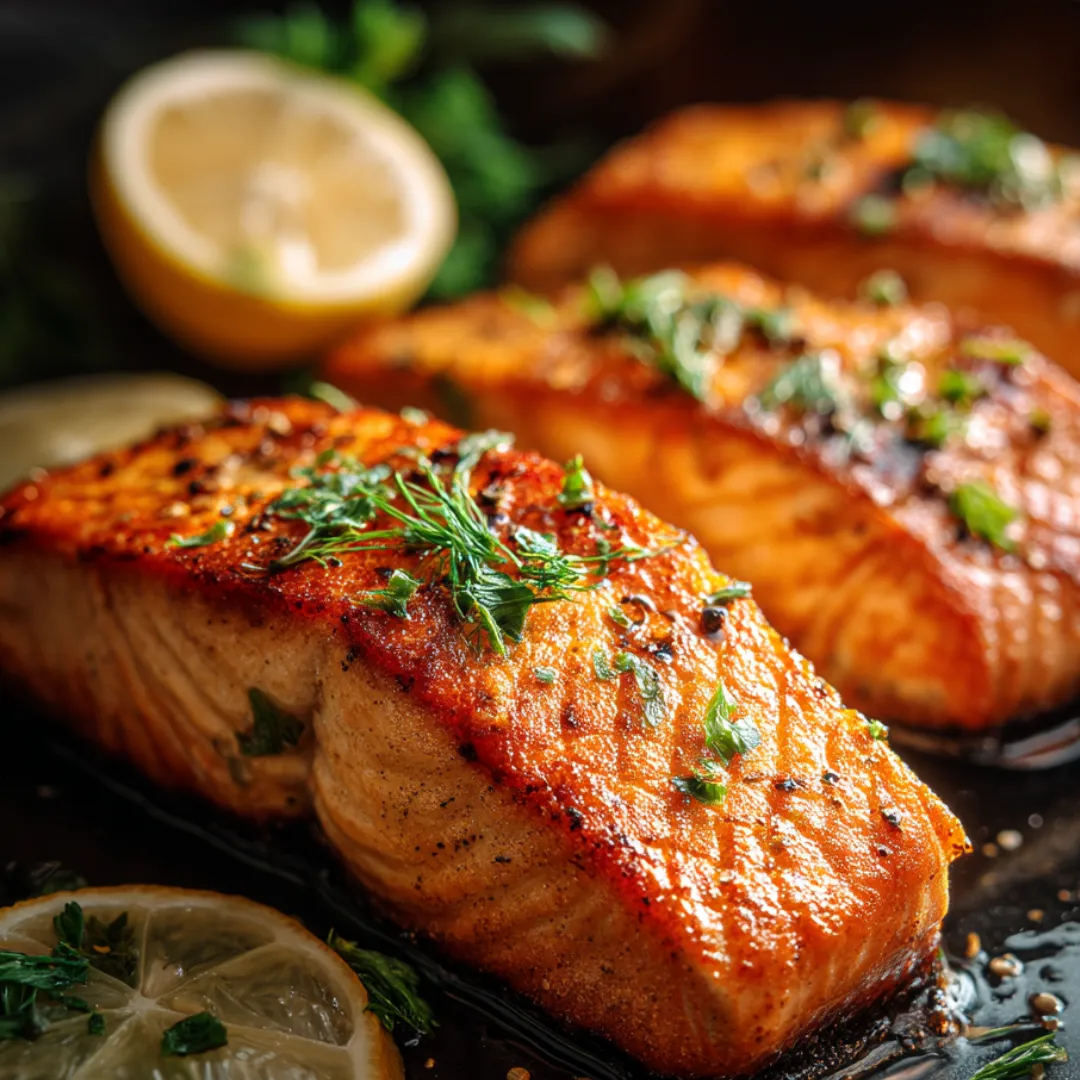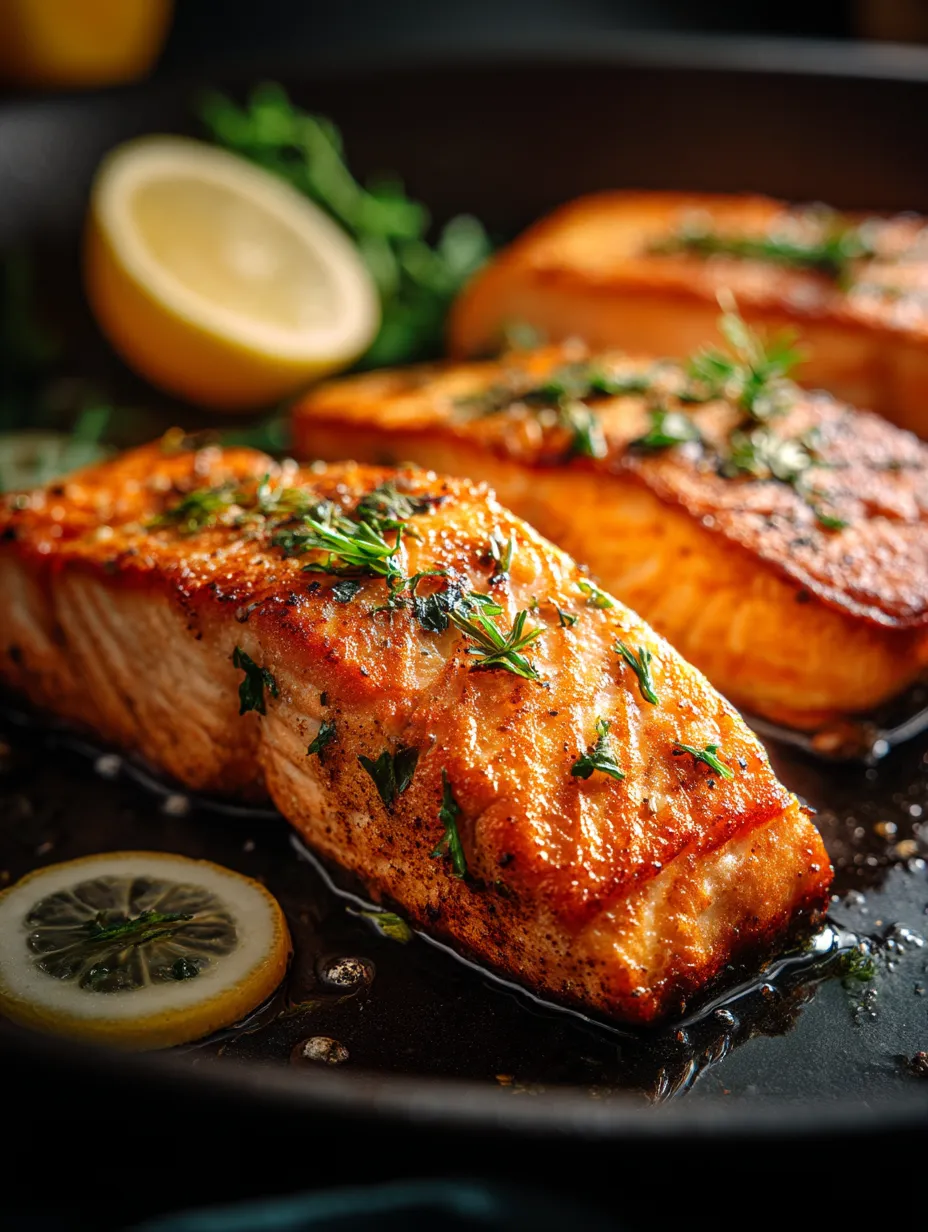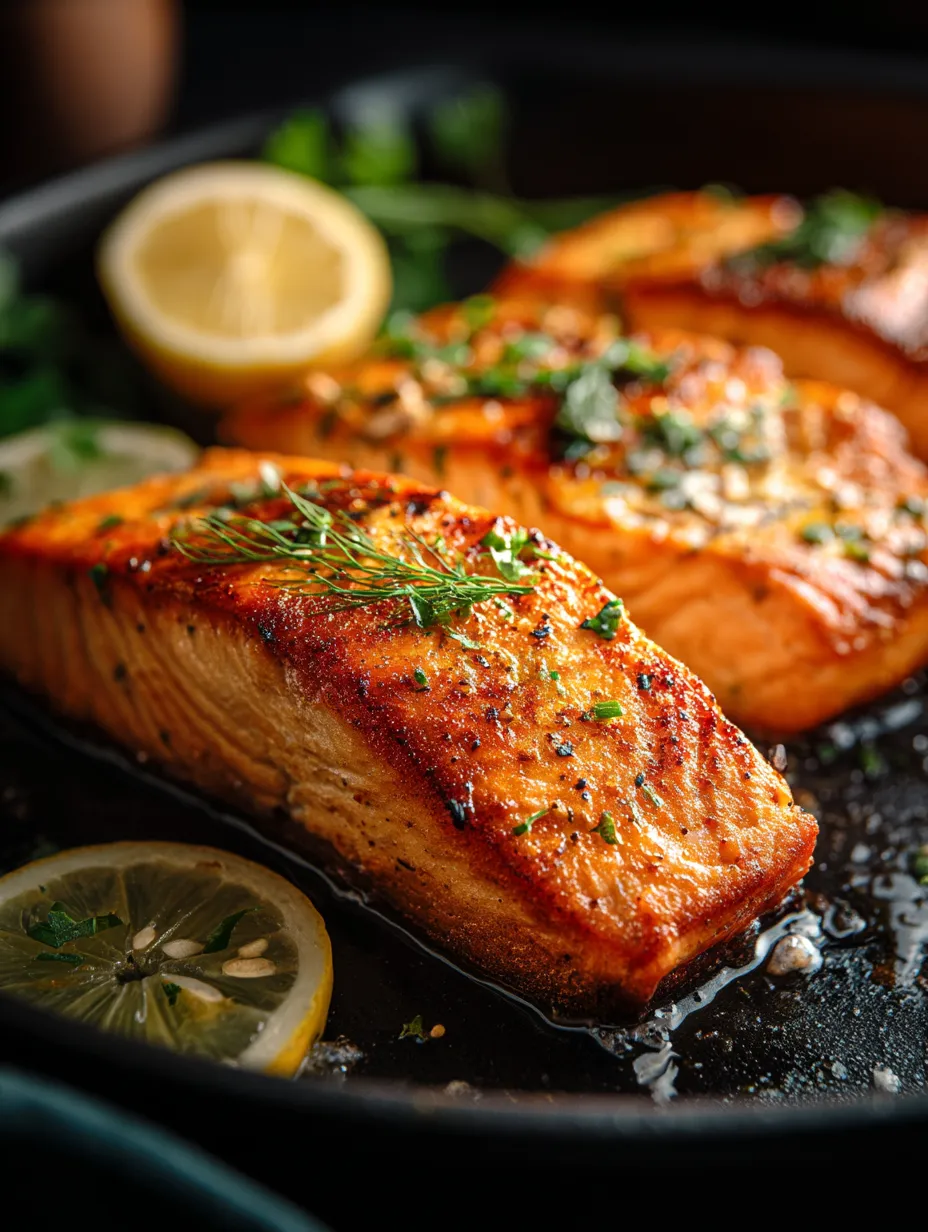 Pin it
Pin it
The magic of perfectly baked salmon lies in its beautiful simplicity. Tender, flaky fish with a slightly crisp exterior that melts in your mouth with each bite. This dish brings restaurant-quality seafood to your dinner table with minimal effort and maximum flavor. Baked salmon strikes that perfect balance between everyday easy and special occasion worthy, transforming a humble fillet into a meal that nourishes both body and soul.
I made this for my neighbor when she was recovering from surgery last month. She texted me later saying it was the first meal that actually tasted good to her in weeks! There's something about the delicate texture of perfectly cooked salmon that feels like comfort food without being heavy. My husband claims this straightforward preparation actually tastes better than the complicated salmon dishes we've had at upscale restaurants.
Essential Ingredients
- Fresh salmon fillets: Look for pieces with bright color, firm texture, and a clean ocean scent; wild-caught varieties like sockeye or coho offer deeper flavor while farm-raised provides consistent tenderness. About 1.5 pounds (4 fillets, 6-8 ounces each).
- High-quality olive oil: Use a good extra virgin olive oil that you'd enjoy in a salad dressing; its fruity notes complement the richness of salmon beautifully. 2 tablespoons needed.
- Fresh lemon: Both the juice and zest bring brightness that cuts through the natural richness of the fish; always use fresh rather than bottled for this dish. 1 large lemon.
- Garlic: Freshly minced cloves provide aromatic depth that enhances without overwhelming; look for firm bulbs with tight skin for the freshest flavor. 2 cloves.
- Herbs and spices: Dried herbs work wonderfully here as they infuse the oil during baking; choose fresh herbs for garnish to add a pop of color and fresh flavor. 1 teaspoon dried thyme or dill, plus 2 tablespoons fresh parsley or chives for garnish.
 Pin it
Pin it
Step-by-Step Cooking Instructions
- Step 1:
- Prepare your oven and equipment – Preheat your oven to 400°F (200°C) and line a baking sheet with parchment paper. The parchment prevents sticking and makes cleanup a breeze. Position your oven rack in the middle position to ensure even heat distribution. This temperature creates the perfect environment for quick cooking that seals in moisture while developing flavor.
- Step 2:
- Prepare the salmon fillets – Pat each of 4 salmon fillets completely dry with paper towels. This crucial step removes excess moisture that would otherwise steam the fish rather than allowing it to roast properly. Check each fillet carefully for pin bones by running your fingertips along the flesh – remove any you find using tweezers or clean needle-nose pliers. Place the fillets skin-side down on your prepared baking sheet.
- Step 3:
- Season generously – Drizzle each fillet with ½ tablespoon olive oil, using your fingers or a brush to ensure even coverage. The oil helps conduct heat evenly while keeping the fish moist. Sprinkle with ½ teaspoon salt, ¼ teaspoon freshly ground black pepper, 2 minced garlic cloves, 1 teaspoon dried thyme or dill, and a pinch of smoked paprika if using. Squeeze the juice of half a lemon over each piece, allowing the acid to penetrate slightly before cooking.
- Step 4:
- For extra flavor dimension – If time permits, prepare the optional honey-mustard marinade by whisking together 1 tablespoon Dijon mustard, 1 tablespoon honey, 1 teaspoon soy sauce, and the zest of 1 lemon until smooth. This creates a sweet-savory glaze that caramelizes beautifully during baking. Spread this mixture evenly over the fillets using the back of a spoon, ensuring complete coverage.
- Step 5:
- Bake with precision – Place the salmon in your preheated oven and bake for 12-15 minutes for medium-thickness fillets (about 1-inch thick). Thinner fillets may need only 10 minutes, while thicker cuts could require up to 18 minutes. The salmon should flake easily with a fork when done but still maintain a slight translucence in the very center – this prevents it from becoming dry and overcooked.
- Step 6:
- Check for doneness – Use a fork to gently probe the thickest part of a fillet; it should flake with minimal resistance but still look moist. For absolute certainty, use an instant-read thermometer inserted into the thickest part – it should register 145°F (63°C), though many chefs prefer to pull it out at 140°F (60°C) and let residual heat finish the cooking.
- Step 7:
- Rest before serving – Allow the salmon to rest for 3-5 minutes after removing from the oven. This crucial step lets the juices redistribute throughout the flesh instead of running out when cut. During this time, prepare your garnish of 2 tablespoons fresh herbs and lemon wedges, which add both visual appeal and a final burst of flavor.
- Step 8:
- Serve with care – Using a thin, flexible spatula, carefully transfer each fillet to serving plates. If the skin sticks to the parchment, you can easily separate the flesh from the skin during this transfer. Garnish with fresh herbs like dill, parsley, or chives, and serve with lemon wedges for squeezing tableside.
I've always had a special connection to salmon. Growing up in the Pacific Northwest, my father would bring home fresh catches from his fishing trips, and we'd prepare them simply to let the natural flavor shine. My daughter now requests this exact preparation for her birthday dinner each year. She loves how the edges get slightly crispy while the center stays tender and juicy. There's something deeply satisfying about watching someone close their eyes with that first perfect bite.
The Perfect Pairing Partners
Salmon's rich character makes it a versatile partner for various side dishes. For a complete meal that feels balanced but not heavy, pair it with roasted vegetables like asparagus, Brussels sprouts, or a medley of bell peppers. The caramelized edges of roasted vegetables complement the salmon's texture beautifully.
For a more substantial meal, serve your baked salmon atop a bed of fluffy quinoa or wild rice pilaf. These grains have enough character to stand up to the salmon's richness while adding satisfying texture and additional nutrients. A simple lemon-herb vinaigrette drizzled over both the fish and grains unifies the plate wonderfully.
The Marinade Magic
While salmon is delicious with simple seasonings, a quick marinade can transform it into something extraordinary. For an Asian-inspired version, combine 2 tablespoons soy sauce, 2 tablespoons maple syrup, 1 tablespoon rice vinegar, and 1 teaspoon minced ginger. Marinate the salmon for just 15 minutes before baking – any longer and the acid in the marinade will begin to "cook" the delicate fish.
For Mediterranean flavors, mix 2 tablespoons olive oil with 1 tablespoon lemon juice, 2 minced garlic cloves, and 1 teaspoon each of fresh oregano and thyme. This bright, herb-forward marinade penetrates quickly and creates a fragrant crust as it bakes.
 Pin it
Pin it
Selecting the Perfect Salmon
Understanding salmon varieties can help you select the perfect fillet for your meal. Wild-caught varieties like sockeye offer a deeper color and more robust flavor, making them ideal for simple preparations where the fish is the star. Farm-raised salmon tends to be milder and more fatty, which makes it very forgiving for cooking and perfect for those new to preparing seafood.
When choosing salmon, look for flesh that appears moist and shiny with no discoloration or dry spots. The fish should smell clean and oceanic, never "fishy." If possible, choose thicker, center-cut portions for the most even cooking results.
I believe baked salmon represents home cooking at its finest – simple enough for a beginner but worthy of serving to guests. What I love most about this recipe is how it showcases the natural beauty of the fish while still allowing for personal touches. The technique remains the same, but you can adapt the flavors endlessly to suit your mood or what's in your pantry. There's something deeply satisfying about mastering a preparation that relies more on understanding the ingredient than complicated techniques. Once you've made this a few times, you'll find yourself reaching for salmon at the market with newfound confidence, knowing a delicious meal is just minutes away.
Frequently Asked Questions
- → How do I know when salmon is done baking?
- Salmon is done when it flakes easily with a fork and reaches an internal temperature of 145°F (63°C). The flesh should be opaque but still moist in the center.
- → Should I leave the skin on the salmon when baking?
- It's a matter of preference, but keeping the skin on helps hold the fish together and adds flavor. The skin also creates a barrier between the heat and the delicate flesh, helping the salmon cook more evenly.
- → Can I use frozen salmon fillets?
- Yes, but thaw them completely in the refrigerator first. Pat thoroughly dry before seasoning, as frozen salmon often releases more moisture.
- → What other seasonings work well with salmon?
- Dill, rosemary, tarragon, and chives all pair beautifully with salmon. You can also try spice blends like cajun seasoning or Italian herbs, or add citrus zest for brightness.
- → Is it better to bake salmon covered or uncovered?
- For this recipe, bake salmon uncovered to allow the exterior to develop flavor. If you're worried about drying out, you can cover with foil for the first half of cooking, then uncover to finish.
